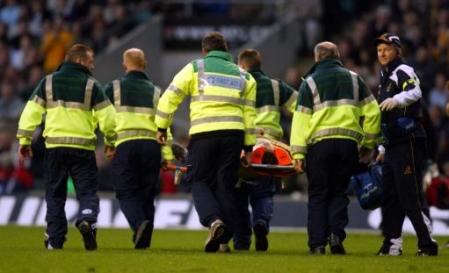Secondary Survey
A player with a time critical illness or injury should never be detained in the pre hospital setting in order to perform a secondary assessment if transport to the appropriate hospital is available.
Proceed only to the secondary survey when:
- Primary survey with appropriate resuscitation has been completed
- ABCDE have been reassessed
- Vital signs are normalising
A full secondary survey includes obtaining a full history of the incident, the player's past medical history and a systematic head to toe examination of the patient designed to detect all the player’s injuries. A rapid pre-hospital head to toe examination includes palpating for areas of tenderness, deformity, haematomas, or evidence of blood loss, vascular or neurological compromise.
The secondary survey history allows for documentation of the mechanism of injury, signs and symptoms, details of the player’s past and current medical history, current medications, allergies and when the player last ate or drank. A useful mnemonic for this is SAMPLE:
- S: Signs and symptoms
- A: Allergies
- M: Medications
- P: Past medical history
- L: Last meal and drink
- E: Events and environment of the injury or illness
The recording of this information can be aided by the medical team having pre prepared documentation including the players personal details, contact details including a next of kin and the AMP parts of SAMPLE history already completed, allowing for the other sections to be added at the time of assessment.
